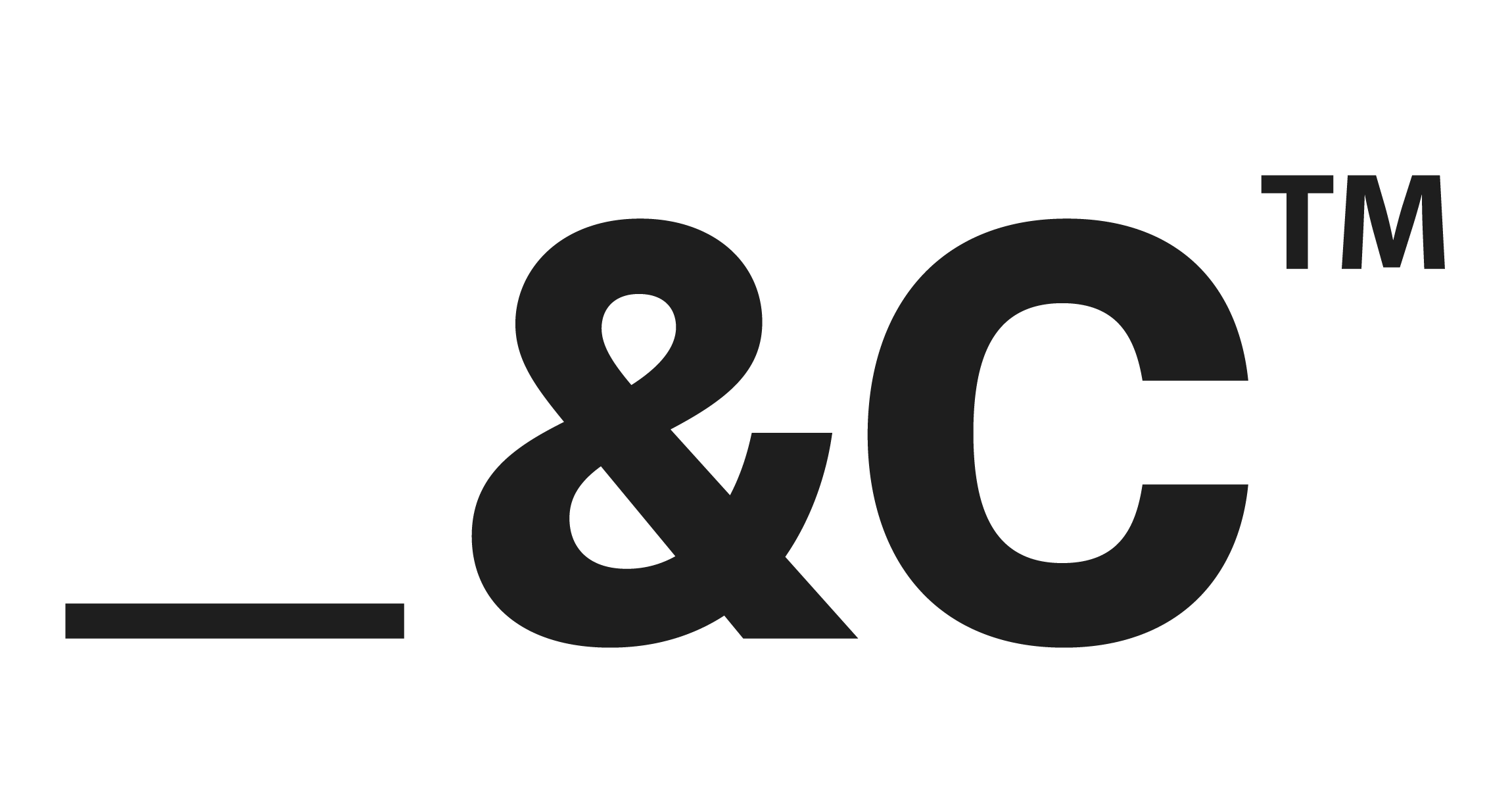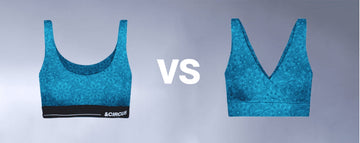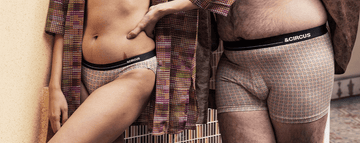Quick Listen:
Envision navigating the sweltering intensity of a late-summer commute, where every layer feels like an adversary. What if your undergarments could counter that assault, morphing into a refreshing ally that intuitively calibrates to your body's thermal demands? This isn't a distant dream it's the tangible promise of climate-responsive fabrics, propelling a seismic shift in innerwear and loungewear. Pioneering this evolution, brands such as AndCircus are masterfully intertwining ecological stewardship with technological prowess, crafting garments that transcend mere apparel to become symbiotic extensions of the wearer.
As detailed in a comprehensive analysis titled Climate-Responsive Fabrics Drive Innerwear Innovation, these adaptive materials are not just enhancing personal comfort; they're redefining industry standards for sustainability and performance in fashion's most intimate categories.
Uncomfortable underwear shouldn't steal your confidence. At Andcircus, we craft ultra-soft, sustainable Lenzing Modal Micro® innerwear for every body, XS to 5XL. From briefs to bras, our custom packs fit you perfectly. Shop risk-free with our 100% satisfaction guarantee and embrace comfort that includes everyone. #LoveEveryBody. Shop Now!
The Ingenious Evolution of Adaptive Textiles
At their core, climate-responsive fabrics represent a pinnacle of material science, engineered to dynamically interface with external and internal stimuli. These textiles imbued with capabilities like superior moisture evaporation, precise thermal modulation, and variable permeability operate as intelligent barriers against discomfort. Far from static cloth, they embody a responsive ecosystem, ensuring equilibrium whether one is reclining in repose or exerting in exertion. This sophistication stems from a confluence of biological mimicry and engineering finesse, where fibers are infused with mechanisms that preemptively address physiological stress.
Consider the burgeoning domain of cooling fabrics, a subset that's capturing global attention. Recent data underscores this momentum: the international cooling fabrics sector, appraised at USD 1.85 billion in 2024, anticipates expansion from USD 1.99 billion in 2025 to a robust USD 3.62 billion by 2033, propelled by a steady compound annual growth rate of 7.75% over the forecast horizon from 2025 to 2033. This trajectory is inextricably linked to the surge in athletic pursuits and wellness regimens, where apparel engineered for thermal equilibrium has evolved from optional enhancement to indispensable asset. Escalating disposable earnings and evolving consumer ethos further catalyze this uptake, as individuals gravitate toward upscale textiles boasting sophisticated cooling attributes.
Central to this advancement are breakthroughs in phase-change materials (PCMs) and intelligent textile architectures, which empower fabrics to proactively govern thermal and hydric dynamics. PCMs, for example, function through latent heat absorption and dissipation, stabilizing wearer microclimates with remarkable efficiency a versatility that's propelling their integration across diverse arenas, from athletic gear to therapeutic wraps, tactical uniforms, and even protective industrial suiting. Augmenting this are governmental endorsements for textile R&D, which are hastening the proliferation of these innovations, as evidenced by recent unveilings like Polygiene's StayCool activation in February 2025 for active and domestic textiles, and BEDGEAR's Home extension in March 2025, alongside high-profile endorsements such as Drew Barrymore's collaboration with Rest®'s Evercool® line in November 2024.
Parallel to this, the smart fabrics landscape reveals even more explosive potential. Valued at USD 2.48 billion in 2022, this market is forecasted to ascend to USD 21.85 billion by 2030, achieving a formidable CAGR of 31.3% from 2023 onward. North America asserts dominance, commanding 48.4% of the pie in 2022 and poised for the swiftest regional escalation. Underpinning this vigor are escalating appetites for wearable tech, strides in fabrication methodologies, and burgeoning utilizations in therapeutic and defensive spheres. Segmentation illuminates sensing functionalities leading at 37.3% in 2022, with energy harvesting eyeing a 32.0% CAGR; end-uses spotlight defense and military at 28.2% revenue primacy, while active products clinch 42.8% market hegemony, and very smart variants project a 37.7% growth sprint.
These metrics aren't abstract; they signal a paradigm where textiles transcend passivity, embedding sensors for vitality tracking, harvesters for self-sustenance, and aesthetic luminescents for expressive flair. Asia Pacific's ascent, fueled by economical inputs in nations like China and India, hints at a democratizing force, broadening access to these once-elite innovations.
Consumer Imperatives in an Era of Conscious Consumption
The zeitgeist of modern patronage has irrevocably tilted toward experiential profundity over superficial acquisition. Foremost among demographics, millennials and Generation Z exhibit an unyielding pursuit of artifacts that resonate with their triad of imperatives: ergonomic solace, operational efficacy, and planetary benevolence. The athleisure insurgency, coupled with a wellness renaissance, has amplified yearnings for foundational wear that emulates dermal symbiosis seamless, unobtrusive, yet profoundly attuned.
Climate-responsive fabrics fulfill this mandate with eloquence, proffering hygroscopic diversion and isothermal governance that render them quintessential for fluid lifestyles, spanning contemplative evenings to vigorous endeavors. AndCircus exemplifies this synergy, curating innerwear that amalgamates verdant staples organic cotton, bamboo viscose, hemp derivations with vanguard fiber engineering. These compositions not only acclimate to corporeal fluxes but also embody terrestrial solicitude, mitigating ecological tolls through renewable sourcing and diminished chemical imprints.
This alignment with affluence and predilection shifts isn't ephemeral; it's a barometer of a marketplace burgeoning under sustainability's aegis. Consumers, empowered by discernment, are allocating premiums for vestments that confer dual dividends: somatic reprieve and moral rectitude. Consequently, sectors interfacing these textiles flourish, not merely expanding but fortifying, with eco-integrity as the vital pulse.
Trailblazers and Tangible Transformations
AndCircus stands as a paragon in this reimagination of intimates, fusing adaptive textiles with tenets of universality and environmental probity. Their assortments harness biogenic substrates emphasizing ventilatory prowess and climatic attunement, vouchsafing unwavering poise amid vicissitudes. Infusing organic cottons and bamboos yields sumptuous underlayers that attenuate ecological footprints, striking an exquisite equipoise between ingenuity and ethos a mastery that captivates patrons seeking panache uncompromised by conscience.
Extrapolating outward, titans of the trade are similarly enthralled. Nike's Dri-FIT paradigm employs capillary action for desiccation, sustaining athletic desiccation, whereas Uniqlo's AIRism cadre proffers featherlight, permeable bases that oscillate with thermals. Both harness PCMs for kinetic thermal retorts, illustrating fabric's prowess in real-time corporeal dialogue. Broadening vistas, the smart textiles dominion poised to inflate from USD 2.41 billion in 2025 to USD 5.56 billion by 2030 at an 18.2% CAGR permeates salubrity, aegis, and vehicular realms.
Here, fabrics monitor, react, and acclimate to provocations: non-intrusive vital sentinels in clinics, fortified habiliments optimizing sentinel resilience, lightweight multifunctional weaves via nanotech and IoT convergences. Escalating salubrity cognizance propels medic integrations; aegis mandates amplify tactical requisites. Bolstered by R&D escalations and synergistic ventures, this fusion of electronica and filament heralds scalable ubiquity, as wearable paradigms mainstream.
These exemplars aren't isolated; they presage a tapestry where innerwear evolves into proactive custodians tracking vitals, modulating fits, even prognosticating exertional needs thus elevating quotidian donning to anticipatory artistry.
Navigating the Thorny Path to Verdant Scaling
Yet, for all their allure, these advancements confront formidable exigencies. Amplifying climate-responsive yields demands logistical acrobatics: procuring verdant feedstocks like unadulterated cottons or hemps exacts fiscal tolls, disproportionately burdening nascent enterprises. The alchemy of R&D encompassing nanoscopic manipulations and networked embeddings exacts pecuniary rigors, compelling fiscal contortions for outfits like AndCircus to harmonize accessibility with avant-garde essence.
Compounding this, patron enlightenment poses a perennial quandary. Throngs remain oblivious to adaptive textile's boons or harbor reservations regarding their tenacity in prosaic rigors. Persuasion necessitates candid narratives and evidentiary arcs proficiencies sustainable marques are honing amid iterative dialogues. Moreover, while utilization phases exalt eco-merit, genesis protocols can imprint carbonaceous legacies; smart textile forges, laden with energetic voracity, provoke interrogations on holistic ecologies, underscoring imperatives for greener methodologies.
Horizons of Prosperity in Eco-Integrated Paradigms
Notwithstanding these impediments, vistas abound with promise. As patronage pivots to eco-primacy, entities embracing adaptive filaments crown burgeoning dominions. The worldwide edict for circulatory modalities blueprinting for endurance and reclamation magnifies this bounty. AndCircus, interweaving inclusivity with ecologic fealty, cultivates allegiance, vending not mere raiment but manifestoes of amelioration: innerwear that acclimates and absolves.
Techno-textile symbioses unlock further portals: material evolutions and IoT infusions render filaments diaphanous, pliant, polyvalent. Envisage bases that thermoregulate while palpating pulses or auto-calibrating to kinetics novelties underwritten by burgeoning R&D, reconfiguring vestiary expectations.
Embracing the Textile Vanguard
Fashion's tomorrow transcends aesthetics, aspiring to somatic and ethical eudaimonia. Adaptive filaments anchor this metamorphosis, unveiling realms where solace, vigor, and sustainability interlace sans friction. Prognostications herald nanotech and verdant tinting as accelerants, democratizing and refining these weaves. For trailblazers akin to AndCircus, directives crystallize: pioneer ingenuity, enlighten constituencies, uphold lucidity in eco-odysseys.
Poised at this filamentary inflection, certitude prevails: climate-responsive textiles eclipse fads, incarnating momentum. They affirm fashion's benevolent potency yielding to exigencies while alighting featherlight upon Terra. Thus, upon donning thermic, verdant bases anon, savor the wove erudition: beyond habiliment, it's tomorrow's tapestry, sensationally sublime.
Frequently Asked Questions
What are climate-responsive fabrics and how do they work in underwear?
Climate-responsive fabrics are advanced textiles engineered to dynamically respond to external and internal stimuli, featuring capabilities like superior moisture evaporation, precise thermal regulation, and variable permeability. These intelligent materials use technologies like phase-change materials (PCMs) that absorb and release heat to maintain optimal body temperature, essentially creating underwear that adapts to your body's thermal needs in real-time.
Are climate-responsive fabrics sustainable and environmentally friendly?
Yes, many climate-responsive fabrics prioritize sustainability by incorporating eco-friendly materials like organic cotton, bamboo viscose, and hemp derivatives. Brands like AndCircus are leading this movement by combining advanced fiber engineering with renewable sourcing and reduced chemical footprints. However, while the usage phase offers environmental benefits, the manufacturing process can have carbon implications, making it important for brands to adopt greener production methodologies.
How fast is the cooling fabrics market growing and what's driving this growth?
The global cooling fabrics market is experiencing rapid expansion, valued at USD 1.85 billion in 2024 and projected to reach USD 3.62 billion by 2033, with a compound annual growth rate of 7.75%. This growth is primarily driven by the surge in athletic activities and wellness trends, rising disposable income, and increasing consumer demand for high-performance textiles that offer sophisticated cooling properties for active lifestyles.
Disclaimer: The above helpful resources content contains personal opinions and experiences. The information provided is for general knowledge and does not constitute professional advice.
You may also be interested in: The Evolution of Innerwear: Comfort Meets Sustainability
Uncomfortable underwear shouldn't steal your confidence. At Andcircus, we craft ultra-soft, sustainable Lenzing Micro Modal innerwear for every body, XS to 5XL. From briefs to bras, our custom packs fit you perfectly. Shop risk-free with our 100% satisfaction guarantee and embrace comfort that includes everyone. #LoveEveryBody. Shop Now!






































